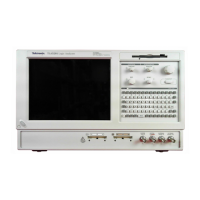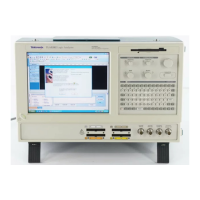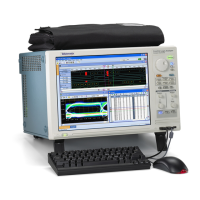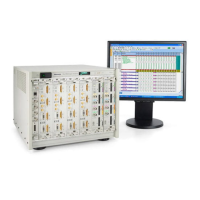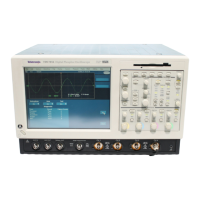Theory of operation
The downloaded
S-parameter data for a probe and attached probe tip is used by
the oscilloscope to generate a DSP correction filter for optimum measurement
fidelity. Because this S-parameter data is unique and serialized for each probe and
probe tip, it only needs to be downloaded once to an oscilloscope.
Automatic probe tip type identification is another example of the intelligent
operation of the P7700 Series probes. When no probe tip is attached to the
TekFlex connector of a P7700 Series probe, the TekFlex probe tip interface
power is disabled. When a probe tip is attached to the TekFlex connector, the
attachmen
t is detected by the probe a nd the probe queries the probe tip memory to
check for a valid identification header. If a valid probe tip type is verified by this
TekFlex data interface query, the probe tip power is enabled until the probe tip
detachment is detected.
When probe tip power is enabled, an LED is activated on the p robe tip, indicating
that the TekFlex interface and attached probe tip appear to be operating properly.
If the probe tip type attached to the TekFlex connector is a browser probe tip,
the probe tip automatically detects the current tip spacing and communicates
that in
formation to the oscilloscope.
There are several calibrated tip spacing regions defined for the browser tip, which
affec
t the frequency response of the browser tip signal. Wider tip spacing tends to
degrade the browser tip frequency response. The oscilloscope uses the current
tip spacing region information to select the optimum DSP correction filter for
use with the browser tip measurements.
P7700 Series TriMode Probes Technical Reference 9

